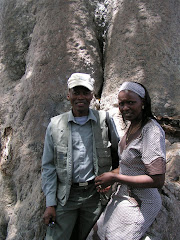Child abuse varies from one region to another depending on the values and norms of a particular culture. Gibbons in DSRU (1995) noted that “as phenomenon child maltreatment is more like pornography than whooping cough. It is a socially constructed phenomenon which reflects values and opinions of a particular culture at a particular time".
What is child abuse?
Child abuse has been defined "a process whereby, either through inaction or action that are injurious, a child's safety, health or development is compromised to a degree that substantially offends against prevailing standards of childcare" Davies (2000:p).
Child abuse should be understood as a historically and culturally specific phenomenon that is susceptible to a fixed or universal definition. Abuse should be from any literal injury or other harm inflicted upon a child, which may or may not be regarded as abusive. For instance, legally sanctioned corporal punishment is usually excluded from accounts of child abuse. Contemporary accounts of child abuse are classified under four broad headings namely; neglect, physical abuse, sexual abuse and emotional abuse (Davies 2000).
Categories of child abuse
According to the Department of Health - UK (2003) some of the incidences of child abuse are classified as follows:
a) Physical abuse-causing any physical injury to a child that might entail hitting, throwing, shaking, burning or scolding, poisoning.
b) Sexual abuse: making a child participate in sexual activities either through penetration, taking part in pornography and watching it.
c) Emotional abuse-any form of treatment that affects the child’s emotional stability and development;
Neglect, in this context, has been defined as failure to meet the child’s material and emotional needs. In the United Kingdom the Children Act of 1989 is more concerned with the significant harm and is less concerned with categorizing abuse.
Events, which fall under physical abuse, include non-accidental injury to a child, or denying a child adequate means of subsistence, protection or care through their physical neglect. There are several debates on what constitute physical abuse. Some people might say that hitting is abusive but some might argue that it is good for children to be hit because at least 90% of children have experienced it at one point in time and this could be considered normal (HSMO, 1995). The most common abuse which is rapidly increasing world-wide is sexual abuse and exploitation.
At least 1 million girls, world-wide are estimated to be lured or forced into sex work each year (UNICEF 1997). Of course sexual exploitation affects both girls and boys. This problem is compounded by poverty affecting most families especially in the developing countries.
Mupedziswa (1997,p.43) has indicated that in Zimbabwe children especially the girl child are lured into prostitution to earn some income while others are forced into early marriages because their parent do not have the means to support them. During the ancient time, the child lived his earliest years in an atmosphere of sexual abuse. For instance, in Greece or Rome children grew up being sexually abused by older men (De Mause 1976:43). Sexual abuse in this context refers to the involvement of minors in sexual activities that they do not fully comprehend, and to which they have not given their informed consent (Davies, 2000).
Emotional Abuse is another category of abuse which describes the active or passive disregard of a child's maturational, emotional and psychological needs through persistent and criticism, shaming, threatening or anxiety inducing behavior on the part of carers (Davies, 2000).
Thursday, November 13, 2008
Subscribe to:
Post Comments (Atom)











No comments:
Post a Comment